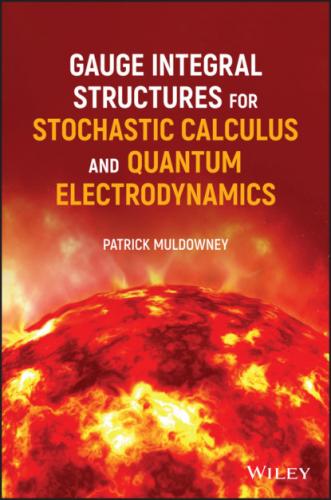The reason for trailing advance notice of details such as these is to provide a sense of the mathematical challenges presented by quantum electrodynamics (system
Feynman's theory of system
This is reminiscent of the stochastic integrals/stochastic sums issue mentioned above. The resolution in both cases uses the following feature of the ‐complete or gauge system of integration.
A Riemann‐type integral
Riemann sums can be expressed as Cauchy8 sums
To define ‐complete integration in “rectangular” or Cartesian product domains such as
Exact specification of the elements or points of the domain, and
A structuring of finite samples of points consistent with Axioms DS1 to DS8 of chapter 4 of [MTRV].
In other words integration requires a domain
This skeletal structuring of finite samples of points of the domain provides us with a system of integration (the ‐complete integral) with all the useful properties—limit theorems, Fubini's theorem, a theory of measure, and so on. More than that, it provides criteria for non‐absolute convergence (theorems 62,
Notes
1 2 The attachment “‐complete” was introduced by R. Henstock in [70], the first book‐length exposition of this kind of integration theory. A few of copies of this edition were printed in 1962. A replacement edition with different page size was printed and distributed in 1963. Up to that time J. Kurzweil and R. Henstock had worked independently on this subject from around the mid‐1950s, without knowledge of each other.
2 3 Henstock's introduction of the “‐complete” appendage is suggestive of “enhanced integrability of limits” rather than “completeness of a domain with respect to a norm”.
3 4 As part of the College Prize awarded by St. John's College, Cambridge, on the results of the 1943 Mathematics Tripos Part 2 examination, Henstock received a copy of Dienes’ book [23], which includes close analysis of convergence‐divergence issues. In a late, unfinished work [78], c. 1992–1993, Henstock used some notable ideas from Dienes’ book.
4 5 The
